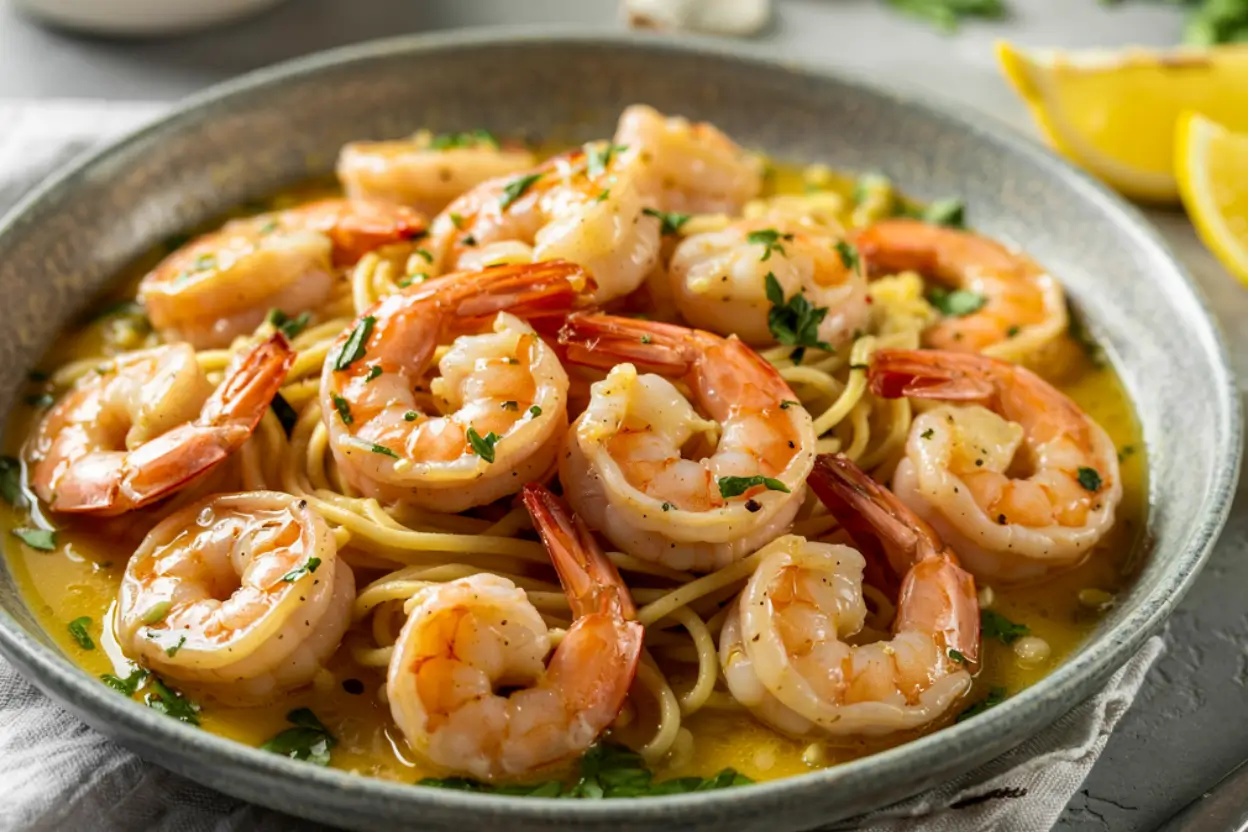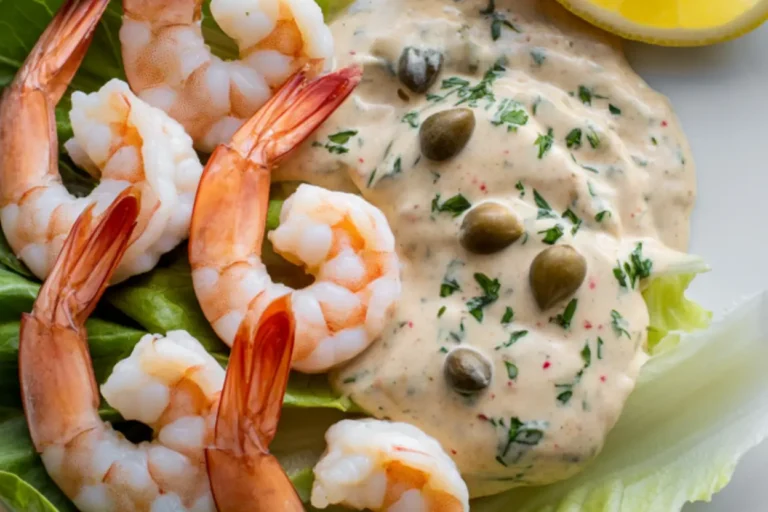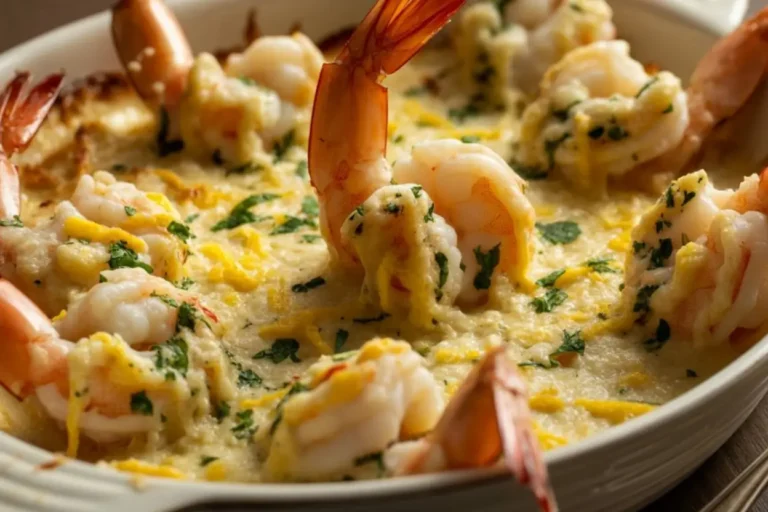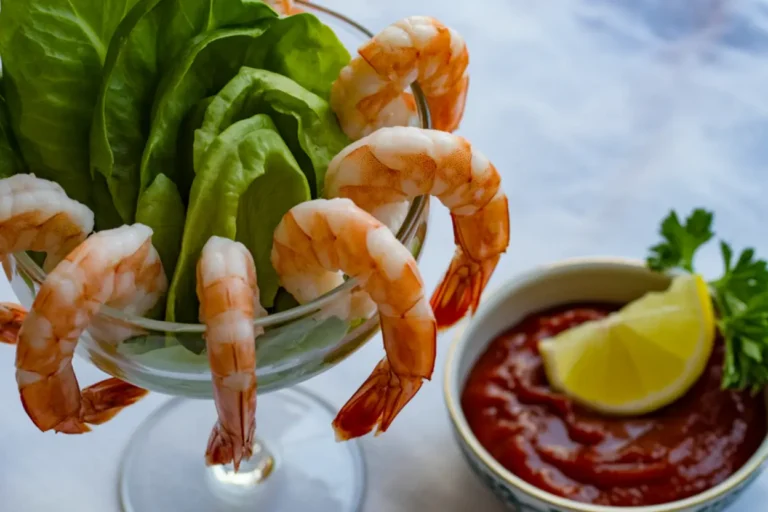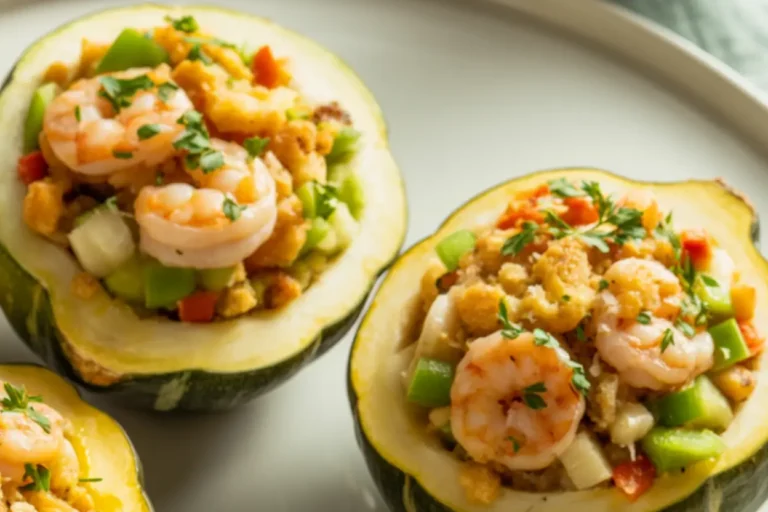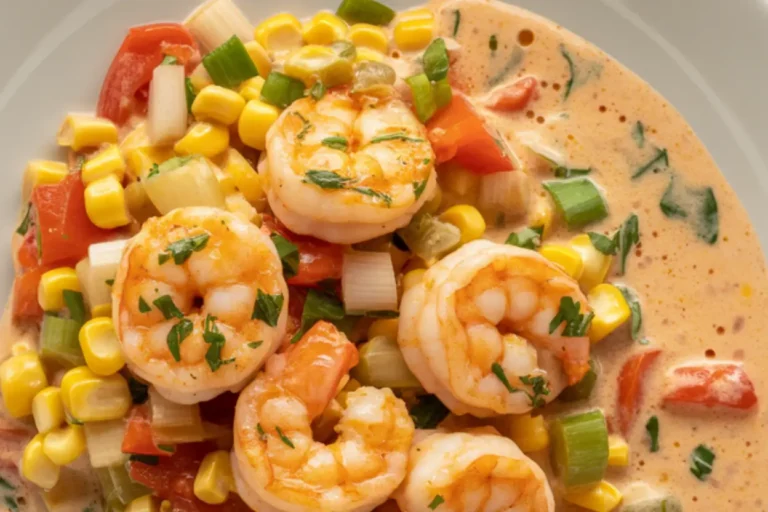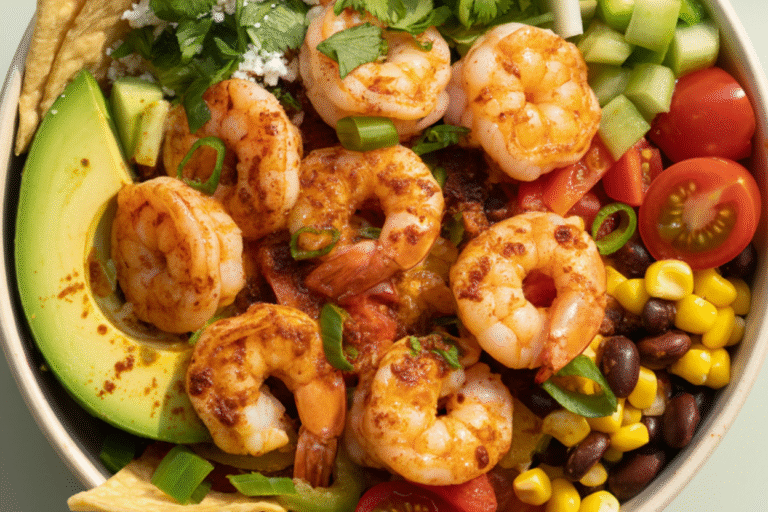Shrimp Scampi Recipe: How to Perfect in 15 Minutes or Less
Table of Contents
What is Shrimp Scampi?
Ever wondered about the slightly redundant-sounding name Shrimp Scampi? Here’s a fun fact: “Scampi” actually refers to langoustines or Dublin Bay prawns in Italian cuisine! When Italian immigrants came to America, they substituted the more readily available shrimp but kept the name “scampi” to describe the garlicky, buttery preparation method. So essentially, “Shrimp Scampi” translates to “Shrimp cooked in the style of Shrimp” – a linguistic quirk that stuck! My Italian grandmother always said this dish proves “the way to a man’s heart is through his stomach,” and one bite of this buttery, garlicky goodness will show you why it’s been winning hearts for generations. Ready to create restaurant-quality Shrimp Scampi in your own kitchen in minutes? Let’s get cooking!
Thank you for reading this post, don't forget to subscribe!How to Make Shrimp Scampi:
Quick Overview
This Shrimp Scampi recipe is the ultimate combination of elegance and simplicity. In just 15 minutes, you’ll create a restaurant-worthy dish featuring succulent shrimp swimming in a luscious garlic butter sauce with bright notes of lemon and a hint of white wine. What makes this recipe special is the technique of quickly cooking the shrimp to ensure they stay tender while developing a rich, flavorful sauce that clings beautifully to pasta or bread. The preparation is straightforward – most of the 15-minute cooking time involves creating the perfect garlic-infused base and ensuring your shrimp cook just until pink and tender. This is truly a weeknight dinner hero that tastes like you spent hours in the kitchen.
The Ingredients I Use to Bring My Shrimp Scampi to Life:
For the Shrimp:
- 1 pound (about 20-24) large shrimp, peeled and deveined, tails on or off according to preference
- 1/2 teaspoon kosher salt
- 1/4 teaspoon freshly ground black pepper
- 1/4 teaspoon red pepper flakes (optional, for heat)
For the Sauce:
- 4 tablespoons unsalted butter, divided
- 2 tablespoons olive oil
- 5 cloves garlic, minced (about 2 tablespoons)
- 1/4 cup dry white wine (such as Pinot Grigio or Sauvignon Blanc)
- 2 tablespoons fresh lemon juice (about 1 medium lemon)
- Zest of 1 lemon
- 1/4 cup fresh parsley, chopped
- Extra lemon wedges for serving
Step-by-Step Instructions:
- Prepare the shrimp: Pat the peeled and deveined shrimp dry with paper towels. This is crucial for getting a good sear rather than steaming them. Season evenly with kosher salt, black pepper, and red pepper flakes if using. Set aside while you prepare the sauce.
- Start the sauce base: In a large skillet over medium heat, add 2 tablespoons of butter and the olive oil. Once the butter has melted and begins to foam lightly, add the minced garlic and sauté for 30-60 seconds until fragrant but not browned. Garlic burns quickly and can turn bitter, so keep a close eye on it and adjust the heat as needed.
- Add the shrimp: Increase the heat to medium-high and add the seasoned shrimp to the pan in a single layer. Cook for 1-2 minutes on the first side until they start to turn pink and slightly opaque. Flip each shrimp and cook for another 1-2 minutes on the second side. Be careful not to overcook – properly cooked shrimp should form a loose “C” shape; if they curl into a tight “O,” they’re overcooked.
- Deglaze with wine: Pour in the white wine and use a wooden spoon to scrape up any flavorful bits from the bottom of the pan. Let the wine simmer and reduce by half, about 1-2 minutes. This step adds depth of flavor and a subtle acidity that balances the richness of the butter.
- Finish the sauce: Reduce heat to medium-low. Add the remaining 2 tablespoons of butter, lemon juice, and lemon zest. Swirl the pan gently until the butter melts and creates a silky, emulsified sauce that coats the back of a spoon. If the sauce seems too thin, simmer for another minute to reduce slightly; if too thick, add a tablespoon of pasta water or chicken broth.
- Add the final touch: Remove pan from heat and sprinkle with fresh chopped parsley, stirring gently to incorporate. Taste and, if necessary, adjust the seasoning with more salt or pepper.
- Serve immediately: Transfer to a serving dish or individual plates, spooning plenty of the garlic butter sauce over the shrimp. Garnish with additional parsley and serve with lemon wedges for squeezing over the top.
What to Serve Shrimp Scampi With:
Shrimp Scampi is incredibly versatile and pairs beautifully with a variety of sides. The most traditional way to serve this dish is over a bed of linguine or angel hair pasta, which provides the perfect canvas for soaking up that delicious garlic butter sauce. For a lighter option, try serving over zucchini noodles or spaghetti squash.
Crusty Italian bread or garlic bread is essential for mopping up every last drop of the sauce – after all, that might be the best part! For a complete meal, add a simple side salad dressed with lemon vinaigrette or some roasted asparagus that complements the lightness of the dish.
If you’re serving Shrimp Scampi for a special occasion, consider starting with a light appetizer like bruschetta or a small Caesar salad. For beverages, the same dry white wine you used in the cooking (like Pinot Grigio or Sauvignon Blanc) makes an excellent pairing, bringing out the lemony brightness of the dish.
For a more substantial meal, consider serving smaller portions of Shrimp Scampi alongside grilled chicken or a simple steak for a surf and turf experience that’s sure to impress. Whatever sides you choose, keep them relatively simple to let the flavors of the Shrimp Scampi shine.
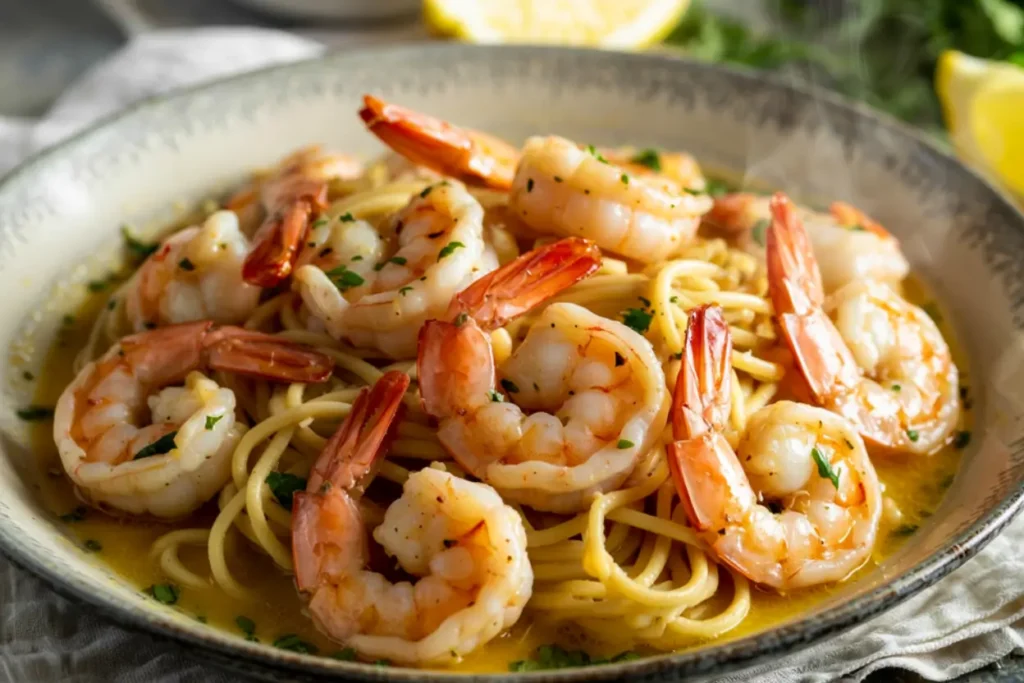
Top Tips for Perfecting Shrimp Scampi:
- Don’t overcook the shrimp: This is the most common mistake when making Shrimp Scampi. Shrimp cook incredibly quickly – usually just 1-2 minutes per side, depending on their size. They’re done when they turn pink and opaque, and form a loose “C” shape. If they curl into a tight “O,” they’ve overcooked and will be rubbery rather than tender.
- Pat the shrimp dry: Before cooking, always pat your shrimp dry with paper towels. This removes excess moisture that would otherwise steam the shrimp instead of searing them, and helps them develop better color and flavor.
- Use good quality ingredients: Since this recipe has so few ingredients, their quality really matters. Use fresh garlic rather than pre-minced, real butter (not margarine), and fresh lemon juice rather than bottled. The difference in flavor is significant.
- Don’t skimp on the butter: While it might be tempting to reduce the amount of butter for health reasons, it’s essential for creating that luscious sauce that defines Shrimp Scampi. If you’re concerned about calories, consider serving with vegetables instead of pasta.
- Control your heat: Garlic burns easily and will taste bitter if overcooked. Cook it just until fragrant, then proceed with the recipe. Similarly, keep an eye on your sauce – it should never reach a rolling boil, just a gentle simmer.
- Fresh vs. frozen shrimp: Fresh shrimp is wonderful if you live near the coast, but high-quality frozen shrimp that’s properly thawed can be just as good. Most “fresh” shrimp at supermarkets have been previously frozen anyway. Look for wild-caught when possible for the best flavor.
- Flavor variations: Feel free to customize your Shrimp Scampi. Add a splash of heavy cream for a richer sauce, mix in some cherry tomatoes for color and sweetness, or toss in some spinach for added nutrition. The basic recipe is a perfect canvas for creativity.
Storing and Reheating Tips:
Shrimp Scampi is at its absolute best when served immediately after cooking. However, if you do have leftovers, they can be stored properly for later enjoyment.
To store: Allow the Shrimp Scampi to cool completely, then transfer to an airtight container and refrigerate for up to 2 days. I don’t recommend storing for longer than that, as seafood quality deteriorates quickly, and the garlic flavor can become overpowering.
For reheating: The trick with reheating Shrimp Scampi is to warm it gently without cooking the shrimp further. The best method is to heat a skillet over medium-low heat, add the leftovers, and warm slowly, stirring occasionally. Add a splash of white wine or chicken broth to refresh the sauce if it seems too thick. Alternatively, you can microwave at 50% power in short 30-second intervals, stirring between each, until just warmed through.
If you stored your Shrimp Scampi with pasta, the pasta likely absorbed much of the sauce. When reheating, add a small amount of butter and a splash of pasta water or chicken broth to recreate the silky sauce texture.
I don’t recommend freezing Shrimp Scampi, as the texture of the shrimp and sauce will change significantly upon thawing. The shrimp can become tough, and the sauce may separate, losing its silky quality.
If you want to prepare components in advance for quicker assembly later, you can clean and season the shrimp ahead of time (store in the refrigerator for up to 24 hours), and measure and prep all other ingredients. Then the actual cooking will take just minutes when you’re ready to serve.
click here to follow me on pinterest
Shrimp Scampi Recipe: How to Perfect in 15 Minutes or Less
Cuisine: Italian-AmericanDifficulty: Easy4
servings15
minutes10
minutes280-320
kcalShrimp Scampi is a quick, elegant dish featuring tender shrimp sautéed in butter, garlic, white wine, and lemon. It’s bright, garlicky, and flavorful, perfect over pasta or served with crusty bread.
Ingredients
1 pound (about 20-24) large shrimp, peeled and deveined, tails on or off according to preference
1/2 teaspoon kosher salt
1/4 teaspoon freshly ground black pepper
1/4 teaspoon red pepper flakes (optional, for heat)
4 tablespoons unsalted butter, divided
2 tablespoons olive oil
5 cloves garlic, minced (about 2 tablespoons)
1/4 cup dry white wine (such as Pinot Grigio or Sauvignon Blanc)
2 tablespoons fresh lemon juice (about 1 medium lemon)
Zest of 1 lemon
1/4 cup fresh parsley, chopped
Extra lemon wedges for serving
Instructions
- Prep the Shrimp
Pat shrimp dry with paper towels to ensure a good sear. Season with kosher salt, black pepper, and red pepper flakes (if using). Set aside. - Start the Sauce Base
In a large skillet over medium heat, melt 2 tablespoons of butter with olive oil. Add minced garlic and sauté for 30–60 seconds until fragrant (do not brown). - Sear the Shrimp
Increase heat to medium-high. Add shrimp in a single layer and cook 1–2 minutes per side until just pink and opaque (shrimp should form a loose “C” shape). - Deglaze with Wine
Pour in white wine and scrape up browned bits from the pan. Simmer for 1–2 minutes to reduce the wine by half. - Finish the Sauce
Lower heat to medium-low. Stir in the remaining 2 tablespoons of butter, lemon juice, and zest. Let everything melt into a smooth, silky sauce. - Add Fresh Herbs
Remove from heat and sprinkle with chopped parsley. Stir gently and adjust seasoning with salt or pepper if needed. - Serve Immediately
Transfer shrimp to plates or a serving dish. Spoon sauce over the top, garnish with extra parsley and lemon wedges, and serve hot.
Notes
- This Shrimp Scampi recipe is a great example of how a few fresh ingredients, garlic, lemon, butter, wine, and herbs can create a restaurant-quality dish in under 30 minutes. Feel free to adjust the spice level by increasing or omitting the red pepper flakes. And if you don’t cook with wine, a splash of broth with a little extra lemon juice makes a good substitute.

